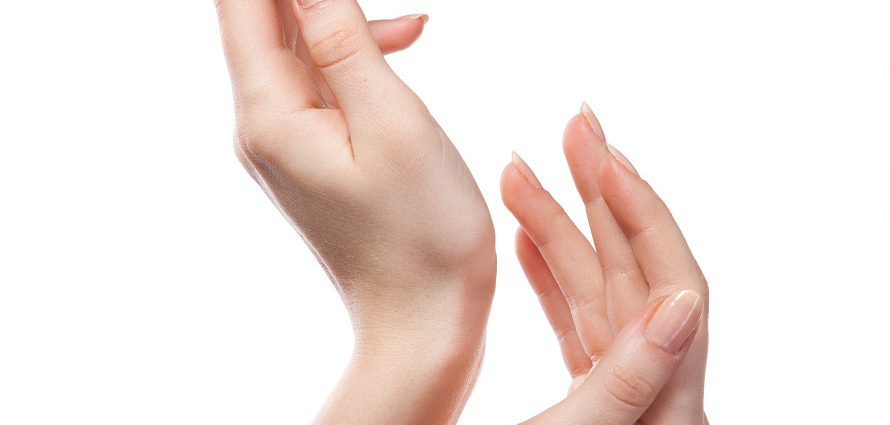Hand Surgery – How it Can Help and Who is a Candidate

Reviewed by Patricia Yugueros, MD
Reconstructive hand surgery can help correct a wide range of functional and cosmetic problems affecting your hand, wrist and forearm. Hand reconstruction can repair tendon injuries, birth defects and joint deformities caused by rheumatoid arthritis (RA). It can also relieve the pain and pressure of carpal tunnel syndrome, and treat Dupuytren’s contracture, a hand disorder in which thick, scar-like tissue bands form within your palm and extend to your fingers.
Today, reconstructive hand surgeons can also perform hand transplants in people who have lost their hands due to trauma. They may also be able to re-attach severed hands after injury.
There were 4.9 million reconstructive surgical procedures performed in 2008, up 3% from 2007, according to the American Society of Plastic Surgeons. Hand surgery was once again among the top five most popular reconstructive procedures performed in 2008. There were 100,000 hand surgeries performed in 2008; up 13% from 2007.
Hand Surgeries
There are many types of hand surgery, including:
Tendon repair. This common hand surgery involves reconnecting a severed tendon to restore movement and function in your hand.
Carpal tunnel hand surgery. The carpal tunnel is a narrow passageway of ligament and bones at the base of the hand that comprises the median nerve and tendons. Possibly caused by repetitive forced movements of the hand and wrist, carpal tunnel syndrome occurs when the median nerve and the nine tendons that run along the carpal tunnel become inflamed. A corrective hand surgery can release the pressure on this nerve which allows for better blood supply and improved movement. Your surgeon may make an incision from the middle of your palm to your wrist. Some surgeons may opt for an alternate procedure known as endoscopic carpal tunnel release. During this minimally invasive hand surgery, he or she accesses the median nerve by inserting a tiny flexible tube with a light and lens (endoscope) through small incisions.
Birth defect correction. Hand surgery can also help correct birth defects such as webbed fingers (syndactyly). In these cases, fingers may be joined by a web of skin, or by skin and a partial fusion of bones. Your surgeon will separate the webbed fingers to provide a full range of motion and a normal appearance. These hand surgeries can also allow for more normal finger growth. Your surgeon has many procedures at his or her disposal to help achieve these lofty goals. For example, a Z-plasty involves the creation of small triangular flaps of tissue that help to close wounds over areas of the hand where bending or flexing is needed. Z-plasty can encourage normal finger growth in people with webbed fingers.
RA hand surgery. RA is an autoimmune disease that occurs when the body engages in friendly fire against its own joints – including the finger joints. If finger involvement is severe, reconstructive surgery may be needed. There are many types of surgery that can help treat the problems associated with hand RA. Sometimes, carpal tunnel surgery can help because many people with RA also have carpal tunnel syndrome. Tendon release or tendon repair can treat abnormal bending of fingers, or repair or reattach tendons, respectively. Surgeons can also remove inflamed tissue (synovium) in the hand. This can decrease inflammation and pain, and can be done in tandem with other RA-related hand surgeries.
Just as people can have other arthritic joints like their knees and hips replaced, finger joints can be replaced. This can be done by replacing damaged joint surfaces in the fingers with plastic or metal-and-plastic implants, or by removing, then replacing the ends of the joint bones with metal and/or plastic components.
Ganglion cyst removal. Ganglion cysts are benign lumps that are often found around the wrist and hand. These cysts can be removed surgically, drained or treated with steroid injections to bring down the inflammation and reduce pain.
Trigger finger surgery. Trigger finger occurs when one of your fingers or your thumb catches and becomes stuck in a bent, lock and loaded-type position. It is caused by a widening of the sheath that surrounds the tendon in the trigger finger. This is usually the result of inflammation. In a healthy finger, the sheath keeps the synovial fluid around the tendon; lubricating it as it glides back and forth. The beginning of this sheath is called the A1 pulley. Surgery is often a last resort for trigger finger treatment, and reserved for cases that do not respond to rest, finger exercises, massage and/or medications. During trigger finger hand surgery, a small incision is made in the palm to release the pulley system and allow the finger to glide again.
DeQuervain’s tenosynovitis surgery. This condition is marked by pain over the wrist joint near the base of the thumb. Surgery is often the last resort for DeQuervain’s tenosynovitis. The first line of therapy involves splinting, anti-inflammatory drugs or steroid injections. Surgery involves opening the sheath surrounding the tendon near the thumb to release pressure.
Dupuytren’s contracture surgery. Surgery for this condition is only indicated for people who experience significant disability. Surgery is not necessarily a permanent solution for Dupuytren’s contracture as it may recur in the same spot or in other places on your hand. There are, however, several surgeries to treat this condition based on the degree of contracture and your hand anatomy. Your surgeon may use a needle or a scalpel to sever the cords of tissue under the skin. These surgeries are called needle aponeurotomy or subcutaneous fasciotomy, respectively. Your surgeon may remove as much of the diseased tissue as they can with a partial fasciectomy. Another option is to completely remove the tissue on the palm of the hand (complete fasciectomy). Sometimes, your surgeon will use skin from another part of your body to replace the excised skin. In these cases, this operation is known as a complete fasciectomy with a skin graft. People who have recurrent Dupuytren’s contracture after many surgeries may need to have a finger amputated. Talk to your surgeon about what surgery, if any, is best for your Dupuytren’s contracture. The U.S. Food and Drug Administration (FDA) recently approved Xiaflex; the first-ever drug treatment for Dupuytren’s contracture. The new drug is an injectable form of the enzyme Collagenase. The studies leading to the FDA approval showed that injecting the new agent into the scar-like bands — which cause the debilitating contractures — weaken them significantly and safely in as little as one day. This resulted in a complete correction of the joint contracture. The new drug is expected to be available in March 2010.
Microscopic Hand Surgery
Some hand surgeries can be performed via an open incision using magnifying glasses or a microscope. These are known as microscopic hand surgeries. Microscopic hand surgery can help identify and protect small structures like nerves and blood vessels in the hands and fingers. It can also help doctors re-attach these tiny structures when doing a hand transplant.
Hand Surgery Candidates
You may be a candidate for reconstructive hand surgery if you are otherwise healthy and do not smoke. Smoking can severely compromise blood flow to your hands and interfere with healing after hand surgery.
During consultation, your hand surgeon will examine your hand. He or she will observe the position of your fingers and check for sensation as well as manual dexterity in your fingers and hand. This exam will help identify the problem, yielding the best course of treatment. Your surgeon may recommend non-surgical treatments such as medication, splints or physical therapy before resorting to reconstructive hand surgery.
If surgery is an option, your hand surgeon may recommend one or more procedures based on your specific problems and goals. Your surgeon will also provide you with a comprehensive list of preoperative instructions including what you can and can’t eat or drink before surgery.
Hand Reconstruction Surgery Risks
No surgery is risk-free. Risks of hand reconstruction surgery may include bleeding, blood clots, infection, scarring, loss of skin sensation, discoloration, unexpected hand swelling, damage to deeper structures in the hand or body, and the possibility of secondary surgery. Make sure to discuss the risks and benefits of hand surgery with your doctor.
The best way to minimize risks and maximize results is to choose an experienced hand surgeon for your reconstructive procedures. Make sure he or she is a board-certified plastic surgeon or an orthopaedic surgeon. These are the two specialties best suited to address your hand problems. Be sure to ask how many times they have performed your specific hand surgery.
Recovery varies based on the nature of your hand surgery. Your cosmetic results will appear gradually as the swelling subsides. It may take several months for you to regain function in your fingers and hands.
Hand Surgery Cost
The cost of hand surgery varies based on the specific type of treatment received and other factors. Consult with an experienced hand surgeon or orthopaedic surgeon to schedule a consultation and discuss cost specifics.
Reconstructive hand surgery may be covered by insurance. (This may not be the case with hand rejuvenation, a cosmetic treatment.) Call your insurer to find out what type of coverage they provide for hand surgery. Sometimes pre-certification may be required. Your surgeon’s office may be able to help you determine if your hand surgery is covered.
About the Reviewer of This Article
Patricia Yugueros, MD, is a board certified plastic surgeon at Artisan Plastic Surgery, with offices in Atlanta and Suwanee, Georgia. She earned her medical degree in Cali, Colombia, and completed her general surgery residency and plastic and reconstructive surgery training at the Mayo Clinic in Rochester, Minnesota. Dr. Yugueros completed a fellowship in hand and microvascular surgery at the Mayo Clinic.
For more information on her practice, click here.



